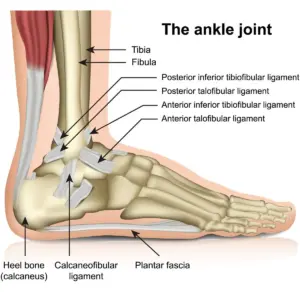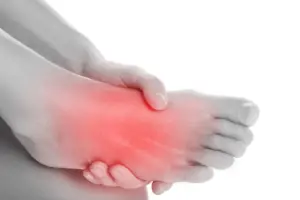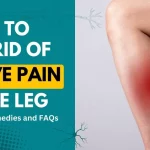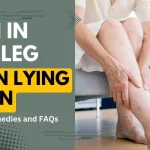Overview of the issue Experiencing a sharp pain on top of your foot when walking can be a discomforting and worrisome ordeal. This type of pain can hinder your mobility and daily activities, making understanding its causes and effective solutions crucial.
The importance of addressing foot pain, including sharp pain on the top of the foot, should be addressed. Ignoring such pain can lead to further complications and affect your overall quality of life. Therefore, it is essential to seek proper guidance and treatment.
What readers can expect from the article In this article, we will explore the various aspects of sharp pain on the top of the foot when walking. We will delve into foot anatomy, common causes of this pain, methods of diagnosis, available treatments and preventive measures. By the end, you’ll have a comprehensive understanding of effectively managing and preventing top-of-foot pain.
Understanding Foot Anatomy

A synopsis of the foot
Understanding the foot structure is crucial to understanding why foot discomfort occurs. A complicated structure, the foot comprises bones, tendons, ligaments, and muscles that cooperate to support your body weight and provide mobility.
Focus on the top of the foot.
The top of the foot consists of several small bones, including the metatarsal bones, which can be prone to injury and pain. Understanding this area’s anatomy will help you grasp why it’s susceptible to discomfort.
Common causes of this kind of pain
It’s vital to understand that pain on the top of the foot can have a variety of causes, including injuries, overuse, or underlying medical concerns before we go into further detail about specific causes. The most frequent reasons for a burning sensation on the top of the foot when walking will be covered in the next section.
Common Causes of Sharp Pain on Top of Foot

Stress Fractures
- Explanation of stress fractures: Stress fractures are tiny cracks in the bones caused by repetitive stress or overuse. They are a leading cause of sharp pain on the top of the foot when walking.
- Symptoms of stress fractures include localized pain, tenderness and discomfort that worsens with activity.
- Risk factors: Engaging in high-impact activities, sudden increases in physical activity and improper footwear can increase the risk of stress fractures.
Extensor Tendonitis
- Extensor tendonitis is the inflammation of the tendons on the top of the foot, which can lead to sharp pain. It often occurs due to overuse or repetitive motions.
- Symptoms include pain, swelling and difficulty moving the toes or foot.
- Risk factors: Activities involving repetitive foot movements, such as running or dancing, can increase the risk of extensor tendonitis.
Neuromas
- On the top of the foot, neuromas, benign growths or thickened nerves can be quite painful.
- Symptoms of the affected area may experience searing pain, tingling, or numbness.
- Risk factors: Wearing uncomfortable or tight shoes, especially ones with high heels, can promote the growth of neuromas.
Diagnosing the Pain
Importance of seeking professional help
For a precise diagnosis when feeling a stab of pain on the top of the foot, it is imperative to seek medical advice. Self-diagnosis may result in ineffective treatment or a delay in healing.
Physical examination by a healthcare professional
The affected area will be the subject of a physical exam to evaluate any oedema, soreness, or range of motion.
Imaging tests (X-rays, MRI, etc.)
In some cases, imaging tests such as X-rays or MRIs may be necessary to visualize fractures, tendonitis or neuromas.
Differential diagnosis
Differential diagnosis helps rule out other conditions with similar symptoms, ensuring an accurate diagnosis and appropriate treatment plan.
Treatment Options
Non-Surgical Treatments
- Rest and ice: Resting the affected foot and applying ice can help reduce inflammation and alleviate pain.
- Pain management techniques: Over-the-counter pain medications may provide relief. Your healthcare provider may also recommend specific pain management strategies.
- Physical therapy exercises Physical therapy can be beneficial in improving foot strength and flexibility, aiding in recovery.
Surgical Interventions
- When Surgery is necessary, Surgery is typically reserved for severe cases or when conservative treatments do not yield results.
- Types of surgical procedures: Surgical options depend on the specific diagnosis, including removing neuromas, stabilizing fractures or repairing damaged tendons.
- Recovery process Recovery following Surgery involves post-operative care, physical therapy, and gradually returning to regular activities under medical guidance.
Preventing Sharp Foot Pain
Footwear
- Choosing appropriate shoes Selecting shoes with proper arch support and cushioning can reduce the risk of foot pain.
- Proper shoe fit: Ensure your shoes fit well, allowing enough room for your toes without causing pressure points.
Foot Care
- Stretching and strengthening exercises: Regular foot exercises can maintain flexibility and strength, reducing the risk of pain.
- Tips for maintaining foot health: Good foot hygiene, such as keeping your feet clean and dry, can prevent common foot issues.
Lifestyle adjustments
- Activities to avoid or modify: Consider modifying high-impact or repetitive activities that may contribute to foot pain.
- Maintaining a healthy weight
Excess weight can put added stress on your feet. Maintaining a healthy weight can reduce this burden and lessen the likelihood of foot pain.
I think you also like it: The Ultimate Guide to Choosing the Best Foot Massager for Wide Feet
Frequently Asked Questions (FAQs)
What are the most common causes of sharp foot pain?
Common causes include stress fractures, extensor tendonitis and neuromas, as discussed in the article.
How can I differentiate between a stress fracture and other types of foot pain?
Consult a healthcare provider for a proper diagnosis through physical examination and imaging tests.
When should I see a doctor about my foot pain?
Seek medical attention if foot pain persists, worsens or limits daily activities.
Are there any home remedies I can try for relief?
Rest, ice and over-the-counter pain medications can relieve, but consult a healthcare provider for proper guidance.
What can I do to prevent foot pain from recurring?
Follow preventive measures outlined in the article, including proper footwear and foot care.
Can I continue exercising with foot pain or stop all physical activity?
Consult your healthcare provider to determine the appropriateness of continuing physical activity with foot pain.
What are the long-term consequences of untreated foot pain?
Untreated foot pain can lead to chronic issues, affecting mobility and overall health.
How long does it typically take to recover from Surgery for foot pain?
Recovery times vary depending on the type of Surgery and individual factors. Follow your doctor’s instructions for a successful recovery.
Are there any alternative treatments for foot pain besides Surgery?
Depending on the diagnosis, physical therapy, orthotics and non-surgical interventions are viable alternatives.
What is the role of orthotics in managing foot pain?
Orthotics can provide additional foot support and alignment, aiding pain management and prevention.



